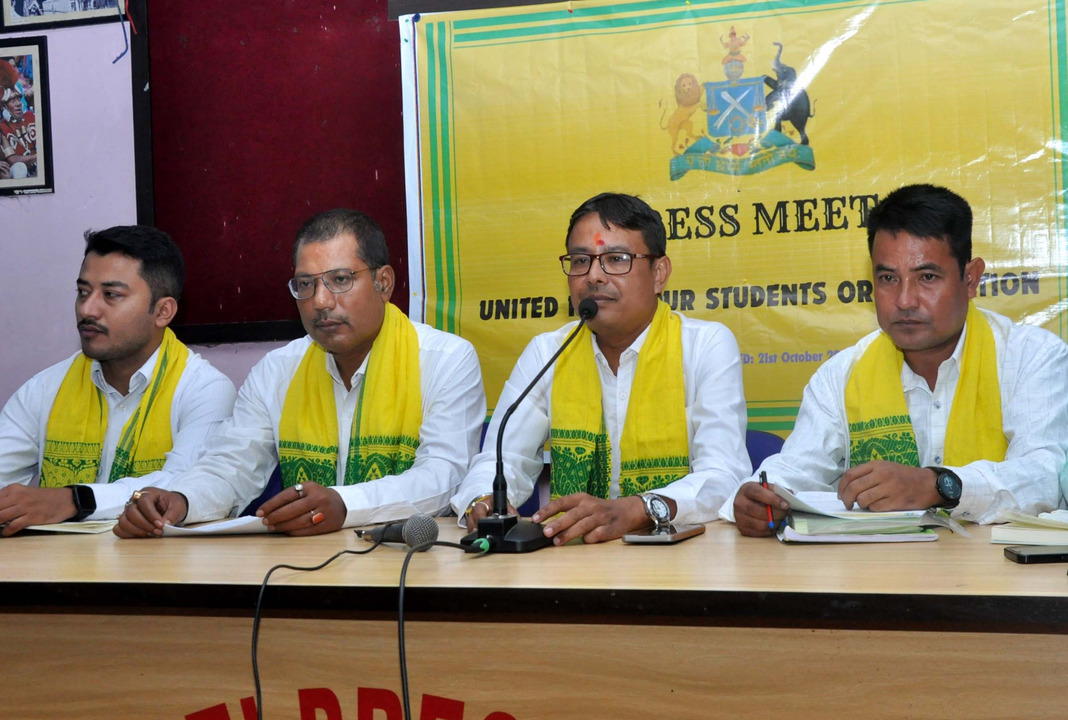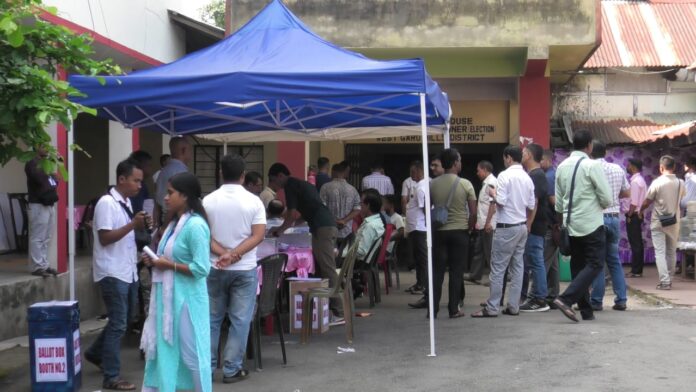Guwahati, October 21: The United Kamatapur Student Organization (UKSO) reacted strongly to recent remarks by Jashimuddin Rahmani, a radical Islamic leader released from jail after the ouster of Bangladesh’s former Prime Minister Sheikh Hasina. Rahmani, known for leading the Ansarullah Bangla Team (ABT), a terrorist group with links to al-Qaeda, had threatened to dismantle India with the support of China by targeting the Siliguri corridor (also known as the “chicken’s neck”), a narrow but strategically critical passage that connects India’s northeastern region to the rest of the country.
Rahmani also called for the “liberation” of Bengal from Indian rule, urging West Bengal Chief Minister Mamata Banerjee to declare its independence.
Addressing a press conference held at Guwahati Press Club on Monday, UKSO president Kapil Das and general secretary Raton Ray expressed their surprise that neither Assam nor West Bengal authorities had reacted to these provocative statements.
They criticized the silence, emphasizing the importance of safeguarding the region, especially the vulnerable Siliguri corridor, against such threats.
The UKSO leaders highlighted the potential risks posed by Rahmani’s extremist rhetoric and urged both state governments to take immediate action to address the matter.
Das and Ray voiced their concerns about the potential dangers posed by the proposed Kamatapur state, particularly its strategic location along the 20 km Siliguri corridor, also known as the “chicken’s neck.” They emphasized that the creation of this state could pose a significant threat not only to Assam but to the entire northeastern region of India.
“We call on the Assam and West Bengal governments to take immediate action to address the risks associated with the proposal,” they also said.
Despite their concerns, the UKSO welcomed the ongoing peace talks with the Kamatapur Liberation Organisation (KLO). The student body, which was formed primarily to press for the creation of a Kamatapur state, expressed optimism that the peace process would lead to a positive resolution. They hoped that a final agreement would be reached soon, bringing stability to the region while addressing the demands of the Kamatapur movement.
The UKSO leaders reiterated that the demand for Kamatapur statehood is not a new issue, recalling that Cooch Behar was categorized as a ‘C’ category state until December 31, 1949, before being merged with West Bengal on January 1, 1950. Since that time, the call for a separate Kamatapur state has only grown stronger.
They emphasized that the Koch Rajbongshi community, whom they represent, is peaceful and seeks to resolve their demands through non-violent means.
“We also appeal to all non-Koch Rajbongshi people living in the proposed Kamatapur region—which includes parts of Assam, North Bengal, and Bihar—to support the movement for a separate Kamatapur land,” they further said.
Additionally, the student body strongly criticized the Kamatapur Autonomous Council (KAC) set up by the Assam government, describing it as ineffective and a “toothless tiger” that fails to address the core issues of the Kamatapur movement. They dismissed the KAC as insufficient for fulfilling their aspirations for autonomy and statehood.




